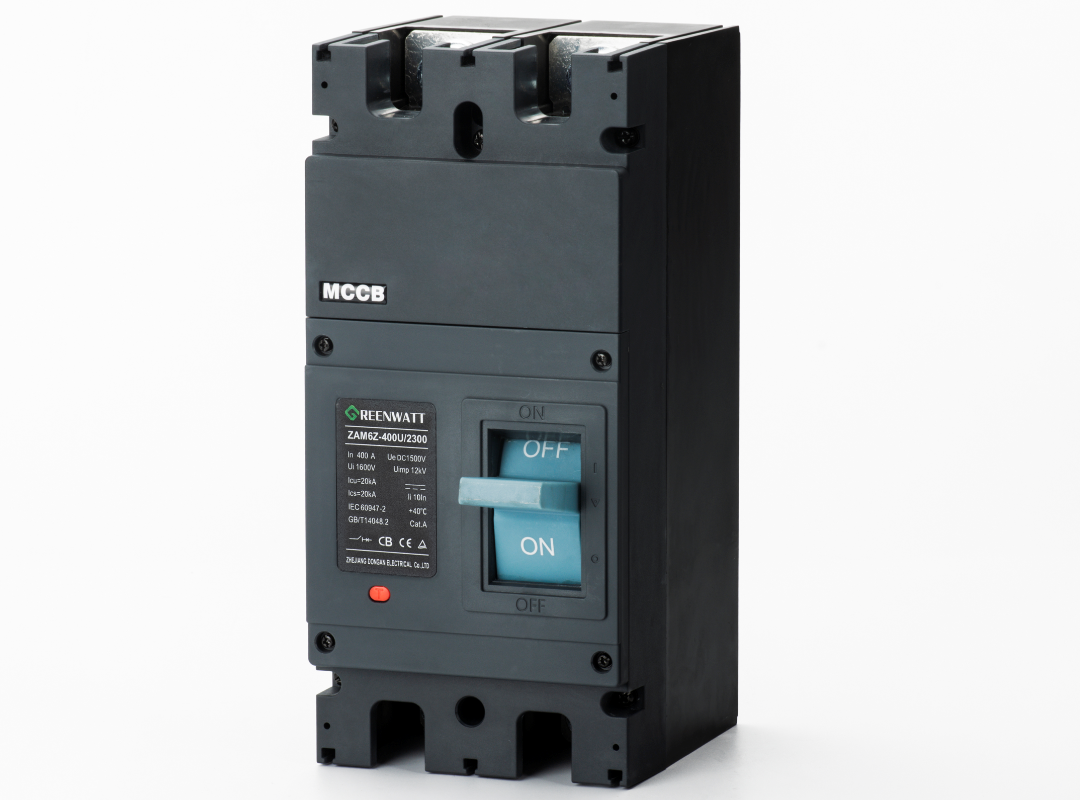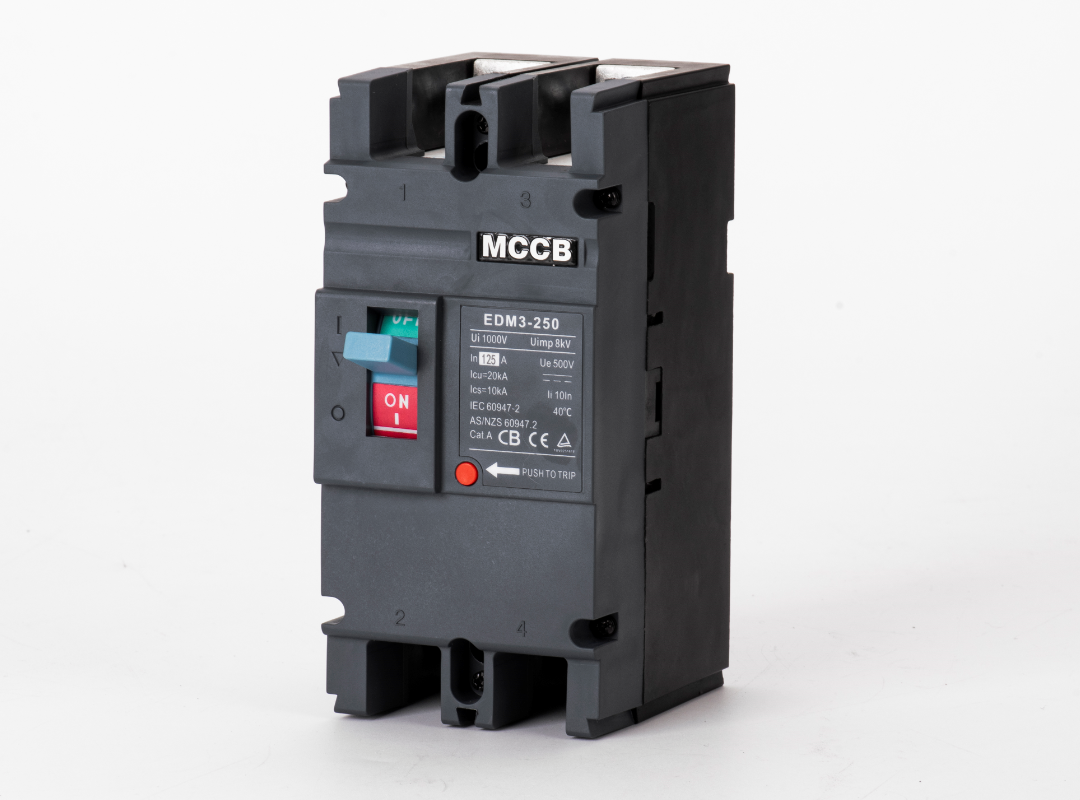DC MCCB Market Surge: Why 2025 Is the Breakout Year for High-Voltage Solar Breakers
2025-07-11
When Every Hour Costs $50,000
The sun shone on Arizona’s 50 MW solar farm, but the commissioning team was in hell. Their crucial DC 1500 V MCCB had broken down in final testing, but with each hour that passed in delay worth $50,000 in lost revenue and contractor penalties, the project manager was desperate and chained his man by phone across three time zones. “We need a 630A DC 1500V MCCB with 20 kA breaking capacity — today!” he begged. This picture is not an exception. However, the reality on construction sites worldwide explains why adequate and reliable DC MEN devices sourcing has evolved to a mission-critical one in the renewable energy sector. At the same time, utility-scale solar projects rush to meet 2025 interconnection deadlines, and demand for high-voltage DC moulded Circuit Breakers has surged to unprecedented levels.

Search Volume Explosion: The Numbers Speak. It seems like a lifetime ago that January 2020 started without a black swan event that would grind travel to a halt and relegate advertising to the lower rungs of Maslow’s hierarchy of needs.
Google Trends shows a surge in DC MCCB searches in 2024 as the number of “DC 1500 V MCCB” jumps 340% compared to the previous year. By region, North America is the home of the most significant number of searches in the world at 45%, then India at 22%, and Germany at 18%. The searching pattern is well synchronised to the solar installation time scale, peaking in our spring commissioning season. Long-tail keywords such as “best DC MCCB for solar” and “DC MCCB price list 1000 V” have grown more than 200 per cent, demonstrating that engineers have progressed beyond simple product awareness to detailed specification research.
This increased demand is reflected on e-commerce sites, where B2B electrical component transactions grow 85% annually on Shopify (Nasdaq: SHOP). Analysts say the B2B electrical parts trade online is estimated to hit $91 billion by 2025, as renewable energy procurement cycles play a significant role. According to LinkedIn market intelligence briefs, 73% of ECs purchase essential components online, disrupting legacy distribution routes.
Riding Renewable Wave: Market Outlook 2025-2030
The size of the DC moulded case circuit breaker market is expected to record an 8-11% CAGR during 2021-30, driven by three mega trends on the convergence path. Solar Photovoltaic Installations of greater than 250 GW worldwide establish foundational demand, and Energy Storage System (ESS) installations grow at a 40% CAGR. The third driver – EV charging infrastructure roll-out – adds another layer of demand, given that fast-charging stations require high-performance DC protection.
North American markets are exceptionally robust, and Linked In industry reports indicate that US federal tax incentives for renewables are pulling demand forward. The Act’s manufacturing credits for DC MCCBs have also led to investments in domestic production of the breakers, which could reshape supply chains historically dominated by manufacturers in Asia. This so-called “friend-shoring” could reduce lead times and strengthen supply chains for critical infrastructure projects.

DC 500 V MCCB: The Workhorse of Telecom and Transit
Telecom rectifiers and light rail systems remain faithful to DC 500 V networks, where technical reliability prevails over voltage economies. These are generally designed for 250-630 A ratings and possess sturdy interrupting capability. The performance capabilities that telecommunication companies have come to expect are met by Schneider’s PowerPacT series, offering a 20 kA@500 Vdc rating. The conservative voltage approach is also reasonable when downtime control is critical, and space limitations are tolerable. Especially in rail applications, the mature ecosystem of 500 V rated components, accessories and field service expertise built over decades is appreciated.
DC 1000 V MCCB: Rooftop Solar Standard
Commercial rooftop PV systems have settled mainly on DC 1000V string settings, and 1000V MCCBs have taken over as the (volume) leaders in solar protection. For the latter set, which usually has a rating of 125-800 A, listing TUV for photovoltaic supplement is imperative. Eaton’s PVGard™ solar photovoltaic circuit breaker proves that circuit breaker designs have been adapted to meet the requirements for solar protection and are comprised of UV-resistant plastics and arc-chute systems specifically validated for DC fault interruption. The 1000-volt voltage class line is the sweet spot for system efficiency and component maturity. To no surprise, this market is still dominated by residential and small commercial installations, where operational performance wins out over bleeding-edge optimisation.
“These products have been designed and engineered in Europe to meet the needs of our customers Down Under.” 6 String in 1 MPPT DC 1500V MCCB: The Game Changer for Utility-Scale The unique new Fronius DC String Capacity 1500V MCCB units provides a solution to the market demand for utility-scale PV systems with higher DC voltages - the trend is increasingly toward 1,500 V, up from the standard 1,000 V.
Utility solar developers are migrating to 1500 Vdc systems at an accelerating rate to cut balance-of-system (BOS) costs by 8-12%. Larger string voltages translate into fewer strings per megawatt, fewer combiner boxes, DC cabling, and labour. This market force has led to strong demand for 160-630 A 1500 V DC MCCBs. LETOP and LS Electric responded with 1500 Vdc breakers built to standard combiner box footprints but capable of utility-grade interrupting capacity. The voltage shift is a game changer for utility-scale PV design; 1500V systems comprise more than 60% of new utility installs.
Standards & Selection Checklist: Good Specifications and How to Get Them
The design and technical requirements of DC MCCB are controlled by IEC 60947-2, with different clauses for DC polarity aspects being subject to consideration due to the lack of such in the AC version. The standard dictates that DC breakers interrupt current in two directions, necessitating symmetric arc-chute and contact arrangements. SU supplement SC to TUV introduces PV-specific requirements, which consist of tests of capacitive switching and series arc fault situations that occur only for solar applications.
Critical selection criteria include:
Breaking capacity versus system fault current: Factor a margin of safety above the calculated fault levels Temperature debating: Brush up on requirements for ambient temperatures greater than 40°C Auxiliary contact options: Prepare for remote monitoring and SCADA integration need SUV resistance: Check that enclosure materials meet outdoor exposure standard S Arc-chute accessibility: Look at maintenance readiness for field-replaceable components.
The interrupting capacity computation is significant because DC fault currents may exceed their AC counterparts because there are no natural current zeros. Engineers must critically evaluate their short-circuit studies and add a prudent safety factor when selecting 600 V DC MCCBs for mission-critical applications.
ICHYTI Manufacturing Edge: DC Experience A Decade In The Making
With 10-plus years of focus on DC MCCB, ICHYTI is a step ahead when every minute counts for your project. While generic suppliers accept that DC breakers are modified versions of AC breakers, ICHYTI has applied DC-only design enhancements to increase interrupting capability and service life. Production transparency separates ICHYTI—the hosts receive a PDF detailing production reports and test data, quality data and shipping photos within 24 hours of order completion.
The firm’s 99% on-time delivery record helps alleviate the supply chain pain points that hinder renewable energy projects. ICHYTI’s stock management ensures that stock levels are maintained for the most popular voltage/current combinations for standard items so that they can be shipped on the same day. That dependability becomes critical as project schedules depend on the assurance that the turbines will show up in time, as this analysis started with the now-infamous Arizona solar farm situation.
Future Tech & Emerging Searches: Next-Gen
Replace the mechanical Isolator with the next generation of Solid State DC Circuit Breakers technology, including fast switching features and improved monitoring functions. As the electrical industry strives for increased visibility into the performance and status of protection devices, IoT-enabled MCCB monitoring systems are starting to appear. The road to utility-scale 2000 Vdc systems will push demand for even higher voltage.
Keyword research indicates that “smart DC MCCB” and “solid-state DC moulded case circuit breaker” will be breakout keywords by 2026. These new technologies will revolutionise DC protection systems through predictive maintenance, remote parameter setting, and digital grid management systems. Visionary engineers need to keep an eye on these innovations as they prepare for these big future renewable energy projects.
Take Action: Your DC MCCB Selection Resources
Ready to get the most out of your DC protection strategy? Get PDF: Download Greenwatt extensive voltage selector guide on 500, 1000 and 1500 Volt applications, which includes comprehensive specification tables, application notes and fitting optimised selection points. Based on our engineering team’s 10 years of DC MCCB operation experience, it offers practical case studies and problem-solving hints.
Ask for technical samples for your upcoming project and discover why the world’s leading renewable energy developers rely on Greenwatt for the most demanding DC protection applications. Questions? Feel free to read our FAQ or consult our engineering staff about your specific voltage / current needs.




